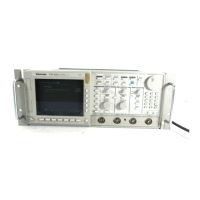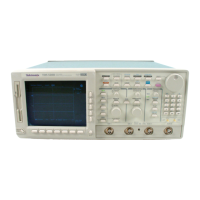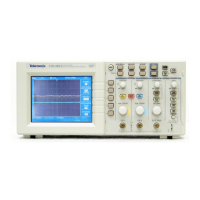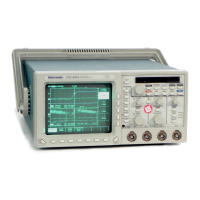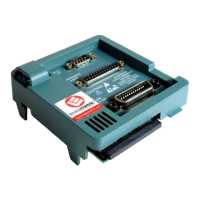Command Descriptions
TDS Family Oscilloscope Programmer Manual
2–49
provided ALIas:STATE has been turned ON. The ALIas:DEFIne? query returns
the definition of a selected alias.
Up to 10 aliases can be defined at one time. Aliases can be recursive. That is,
aliases can include other aliases with up to 10 levels of recursion.
Alias
ALIas:DEFIne <QString><Comma>{ <QString> | <Block> }
ALIas:DEFIne? <QString>
ALIas
:
DEFIne
<Comma><QString><Space>
<QString>
<Block>
<QString>
<Space>
?
The first <QString> is the alias label. This label cannot be a command name.
Labels must start with a letter, and can contain only letters, numbers, and
underscores; other characters are not allowed. The label must be ≤12 characters.
The second <QString> or <Block> is a complete sequence of program messages.
The messages can contain only valid commands that must be separated by
semicolons and must follow all rules for concatenating commands (see page
2–4). The sequence must be ≤80 characters.
NOTE. Attempting to give two aliases the same name causes an execution error.
To give a new alias the name of an existing alias, you must first delete the
existing alias.
ALIAS:DEFINE "ST1",":RECALL:SETUP 5;:AUTOSET EXECUTE;:SELECT:CH1
ON"
defines an alias named “ST1” that sets up the digitizing oscilloscope.
ALIAS:DEFINE? "ST1"
might return :ALIAS:DEFINE "ST1",#239:RECALL:SETUP 5;:AUTOSET
EXECUTE;:SELECT:CH1 ON
Group
Syntax
Arguments
Examples

